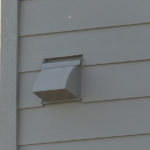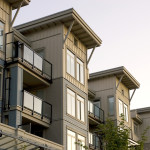 As an HVAC professional you know the impact buildings have on your customers’ daily lives. From providing heating and cooling and ventilation, and protecting the integrity of the building envelope, you make choices every day to improve their well-being.
As an HVAC professional you know the impact buildings have on your customers’ daily lives. From providing heating and cooling and ventilation, and protecting the integrity of the building envelope, you make choices every day to improve their well-being.
As issues such as air quality attract more attention, your customers will be looking for ways to ensure the buildings in their care are good for the health of occupants. Certification is a great way to find out if a building measures up and to promote its value when it does.
In recognition of the important relationship between human health and the built environment, the International Well Building Institute (IWBI) developed the Well Building Standard. You can expect to hear a lot about this program as your customers seek ways to add value to their building projects.
The Well Building Standard measures the impact of building features on human health as they relate to these seven concepts:
Air
Water
Nourishment
Light
Fitness
Comfort
Mind
Innovation
It is no accident that air is first on the list. According to the Well Certification website, “clean air is a critical component to our health.” The organization cites air pollution as the top environmental cause of “premature death” that contributes to about seven million deaths worldwide.
Wellness Standards identify acceptable levels for numerous contaminants including, volatile organic compounds, carbon monoxide, particulate matter, ozone, and radon. Acceptable levels vary based on building use. For example, an office should have less than 9 parts per million (ppm) of carbon monoxide, but a commercial kitchen can have levels as high as 35ppm.
These concepts overlap with HVAC influencing human comfort, fitness, and mind. Providing occupants with variable temperature options, for example, can be beneficial in all of these categories.
Fortunately for HVAC professionals, Well Building Certification does not represent an entirely new set of standards. The IWBI refers to organizations such as the American Society of Heating, Refrigeration and Air-conditioning Engineers (ASHRAE), Environmental Protection Agency and the World Health Organization for establishing their measures.
Another good feature is that Well complements environmental certification such as Leadership in Energy and Environmental Design (LEED) and the Building Research Establishment Environmental Assessment Method (BREEAM).
In fact, Well Building Certification is recognized by the US and Canadian Green Building Councils, which also administer LEED certification in their respective countries. And the International Well Building Institute (IWBI) has partnered with BREEAM to publish a briefing paper that provides advice for efficiently meeting the certification requirements for both programs.
How the Process Works
The first step in Well Certification is to register the project online. Registration involves submitting basic information about the project such as building size and intended use. At this stage, the project is assigned a Well Assessor, an independent, licensed party who will provide support regarding the technical features of the Well standards in the early phases.
The next stages in the process are the gathering and submission of documents relating to the project. Depending on the project, the documentation portion of the process can take anywhere from three to five years. As documentation is submitted, it is reviewed by the assessor.
Once all documents have been received and reviewed by the assessor, the project moves into the Performance Verification Process. During this stage, the assessor will perform testing and measurements to evaluate whether the building meets the Standards.
The Performance Verification Process concludes with the creation of a report and the certification award. Three levels of certification are available: Silver, Gold and Platinum.
It’s a good idea to familiarize yourself with Well Standards even if you don’t expect to work on projects that apply for certification. When you consider that most of your customers spend almost 90% of their time indoors, these standards could be the start of a whole new way of thinking about buildings.



